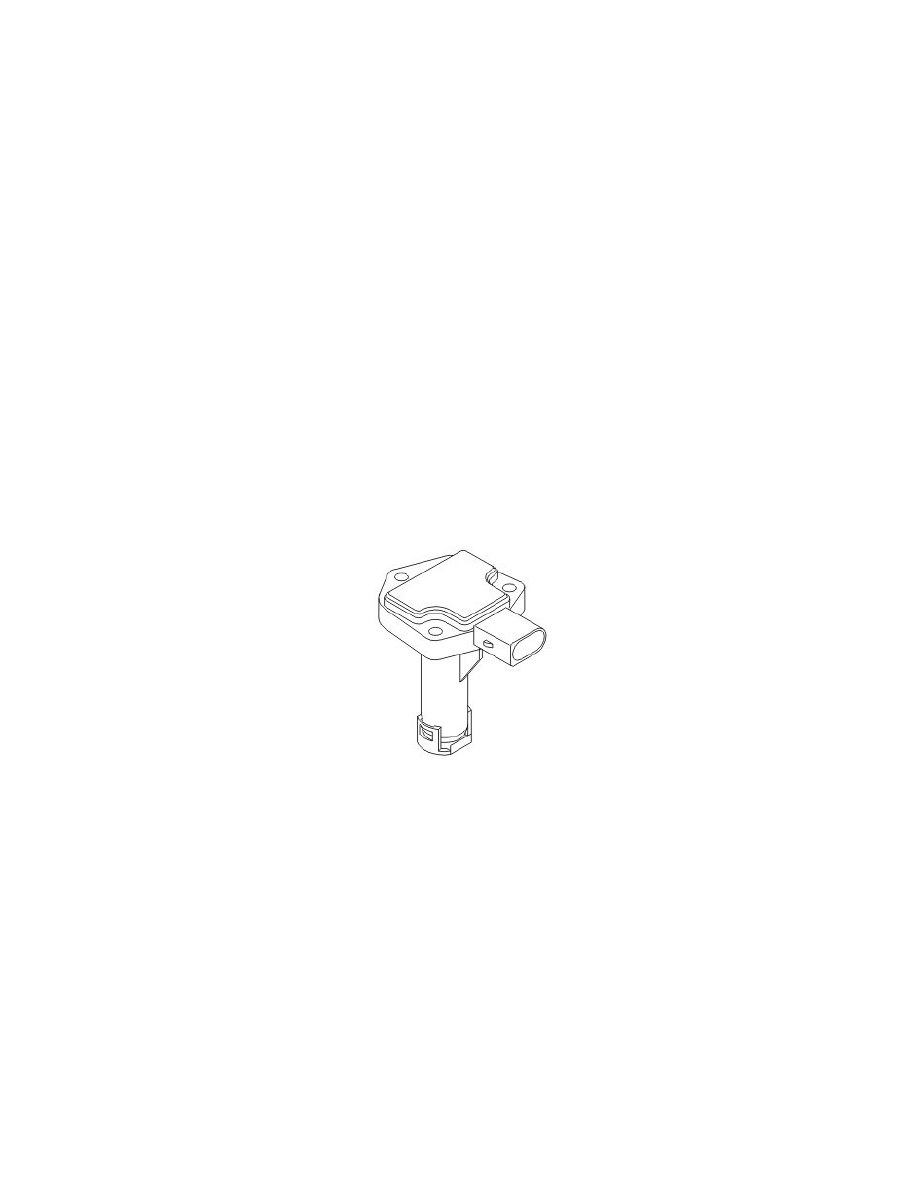XC90 L5-2.5L Turbo VIN 59 B5254T2 (2004)

The pressure sensor is a Piezo resistive type resistor, the resistance of which changes with the pressure. Depending on the pressure in the fuel rail, an
analog signal of 0-5 V is transmitted. Low pressure results in low voltage, high pressure in high voltage.
The engine control module (ECM) then uses this signal to adjust the pressure in the fuel rail using the fuel pump control module. Also see Function See:
Description and Operation/Bosch ME7.01 Engine Management System/Function.
The pressure sensor is supplied with 5 V and grounded in the engine control module (ECM). The pressure sensor transmits a signal indicating the fuel
pressure to the engine control module (ECM) on a separate cable.
The engine control module (ECM) can diagnose the fuel pressure sensor. Its signals (pressure and temperature) can be read using VIDA.
Note! The absolute pressure is displayed when using VIDA parameter readout to read off the fuel pressure. If there is no pressure at the fuel
rail, the atmospheric pressure will be displayed.
Hint: The relative pressure (absolute pressure minus atmospheric pressure) is displayed when reading off the fuel pressure via a manometer connected to
the fuel rail.
Part 3
Design (Continued)
Fuel temperature sensor
The temperature sensor is an NTC sensor. The sensor is supplied with voltage (signal) from and grounded in the engine control module (ECM).
The resistance in the sensor changes according to the temperature of the fuel. This provides the engine control module (ECM) with a signal of between
0-5 V. Low temperature results in high voltage (high resistance). High temperature results in low voltage (low resistance).
The engine control module (ECM) uses the signal to calculate the volume of the fuel.
The fuel pressure sensor is on the left-hand end of the fuel rail.
Oil level sensor (2004-, certain markets and models only)
The oil level sensor provides the engine control module (ECM) with information about the quality and temperature of the engine oil and the oil level in
the oil trough. Which of these functions is used by the sensor varies between different car models.
All three functions are combined in one unit with a sensor section and an electronics section. There are no moving parts in the sensor.
The sensor consists of:
-
a terminal with three pins
-
integrated electronics
-
2 capacitive gauge elements
-
a PTC resistor.
The oil level sensor is supplied with 5 V by the engine control module (ECM). The oil level sensor generates a PWM signal for the engine control
module (ECM). Also see Function See: Description and Operation/Bosch ME7.01 Engine Management System/Function.
The engine control module (ECM) can diagnose the functions of the oil level sensor. Also see Oil level sensor, diagnostics See: Engine, Cooling and
Exhaust/Engine/Engine Lubrication/Oil Level Sensor/Testing and Inspection.
The pulse-width modulated (PWM) signal from the oil level sensor can be read using parameter readout.
Main relay (system relay)
